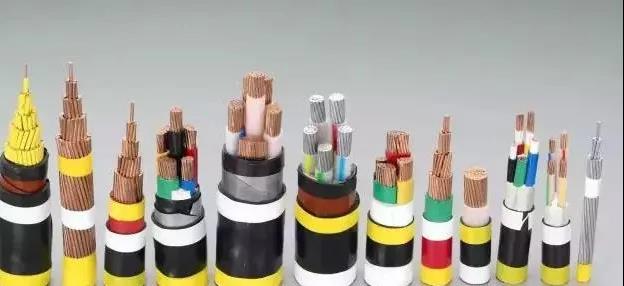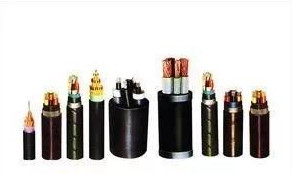National standard ACSR Cable, literally, is the wire and cable produced in strict accordance with national standards. China has clear regulations on the appearance, mechanical strength, insulation of sheath, withstand voltage strength and line resistance of cables. There are different national standards for different types of cables, mainly as follows:
·Executive standard for irradiation crosslinked power cable (0.6 / 1KV): GB / t12706.1-2008
·Executive standard for medium voltage XLPE cable (6 / 6kv-26 / 35kV): GB / t12706.2-2008
·Executive standard for high voltage XLPE cable (64 / 110kV): GB / t11017 – [/ b] 2002
·Executive standard of control AAAC Cable (450 / 750V): gb9330-88
·Executive standard for aluminum strand and ACSR (0.6 / 1KV): GB / t1179-1999

How to distinguish national standard cable?
I want to see it. See if there is quality system certification; Check whether the certificate is standard or not; Check whether there is factory name, address, inspection seal and production date; See if the trademark, specification, voltage, etc. are printed on the wire. But also look at the cross-section of the wire copper core, superior copper color bright, soft color, otherwise it is inferior.
Try. Take a wire head and bend it repeatedly by hand. Those with soft handle, good fatigue resistance, high elasticity of plastic or rubber handle and no crack on the wire insulator are excellent products.
weighing. Good quality wires are generally within the specified weight range. For example, the commonly used plastic insulated single strand copper wire with a cross-sectional area of 1.5mm2 weighs 1.8-1.9kg per 100m; The weight of 2.5mm2 plastic insulated single strand copper wire is 3-3.1kg per 100m; The weight of the poor wire is not enough, or the length is not enough, or the copper core of the wire is too much impurity.
Look at the copper. Qualified copper wire copper core should be purplish red, glossy and soft. The copper core of the fake copper wire is purple black, yellow or white, with many impurities, poor mechanical strength and poor toughness. It will break with a little force, and the wire is often broken. When checking, you only need to strip one end of the wire for 2cm, and then rub it on the copper core with a piece of white paper. If there is black substance on the white paper, it means that there are more impurities in the copper core. In addition, the insulation layer of fake wires seems to be very thick. In fact, most of them are made of recycled plastics. Over time, the insulation layer will age and leak electricity.
Look at the price. Because of the low production cost of fake wires, vendors often sell them at low prices under the guise of low price and good quality.

“Non standard / enterprise standard / market national standard” and “national standard of resistance protection”?
When many sales companies are asked whether they are GB cables, they often hear such words as “GB for market” and “GB for resistance protection”. Many people have little understanding. What do these vague words mean?
Resistance national standard: cable is used for power, and conductor resistance directly affects the conductivity. If the conductor resistance is too large, the conductivity is poor, when there is a large current through, it will produce a lot of heat, which will cause a fire. At the same time, because of the high resistance, it will also produce heat and inaction consumption of electric energy.
Resistance cable is to ensure that the resistance value of the cable is in line with the national standard, but it does not guarantee that the component materials of the cable are completely produced in accordance with the national standard, such as conductor square, insulation, sheath, etc. To put it bluntly, it means that through various technological innovations (or means), the manufacturer can make the cable reach the safe use condition on the premise of reducing the material cost.
Note that two words are used here: innovation and means. Innovation refers to the cost reduction through technological innovation, such as the current aluminum alloy conductor, special-shaped conductor, etc., which reduces the price on the premise of ensuring safe use. Some manufacturers reduce the cost through some illegal means, such as using second-generation materials, reducing the purity of conductor, etc. even if the resistance value of such cable is within the standard range, its use is extremely unsafe. When purchasing this kind of cable, it must be screened again and again.
“Enterprise standard / non-standard / market national standard”: these words are easy to understand, “enterprise standard / non-standard” is non-national standard cable, the price is extremely low, and it is also extremely unsafe“ Market national standard “generally refers to 9 fold cable (or 95 fold), we must not regard it as national standard, we must ask clearly. In addition, we should pay attention to the fact that the enterprise standard is higher than the national standard in accordance with the principle, but the domestic standard does come in the opposite direction!
In recent years, there are more and more fire accidents caused by unqualified wires and cables, many of which are purchased unqualified products due to the lack of cable knowledge. It is our duty and responsibility to produce and purchase GB cables, so as to ensure the safety of power supply and the healthy development of cable market.
